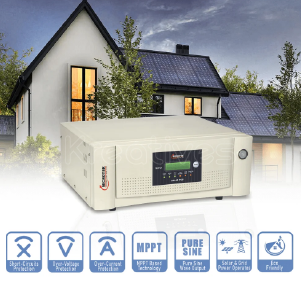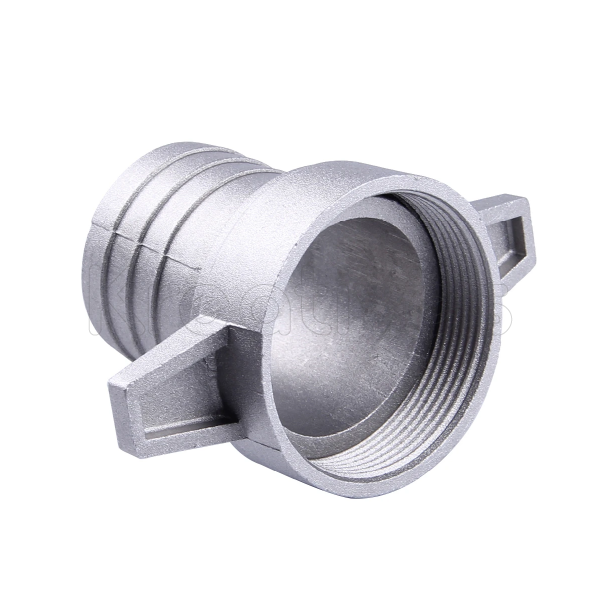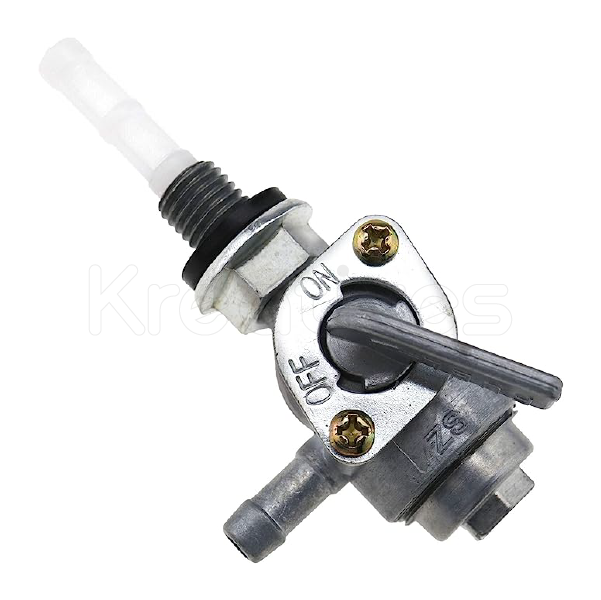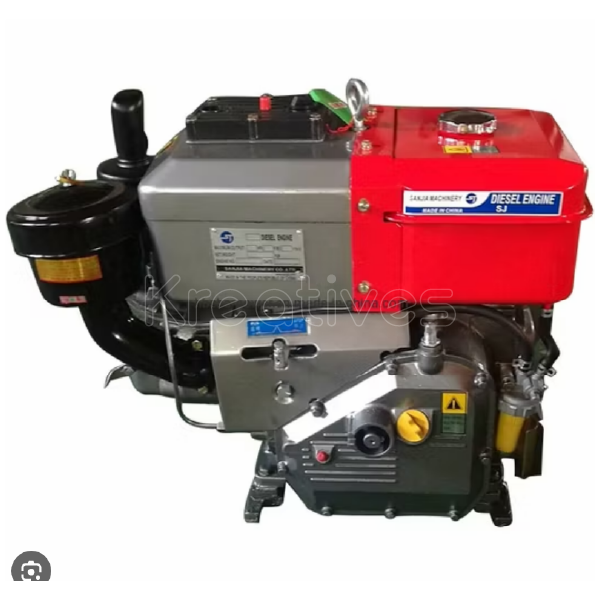

Microtek MPPT 1000Watts 12V Hybrid Inverter Charger | For Solar+Grid+ Generetor
-
Ksh.1,910
Ksh.2,300 -
Ksh.50,999
Ksh.55,999 -
Ksh.900
Ksh.1,600 -
Ksh.1,900
Ksh.2,200 -
Ksh.33,500
Ksh.44,500
Reviews & Ratings
Microtek PWM BASED SOLAR PCU is designed to utilize maximum use of Solar Energy. If there is excess of Solar Energy Generation from PV then it charges the Battery and simultaneously it supplies the Power to the Load.
While a solar PCU is similar to a solar inverter, there are a few differences. In a solar PCU, battery charging is very important during the day. Solar PCU controls the core and selects the charging source accordingly. Comes with a user that selects the energy-saving option to allow the user to choose the priority and save the bill. It also selects the AC output source from Solar or inverter or grid. In Energy Saver Mode first supplied to Solar, the battery is pre-charged and also supports the inverter to power electrical items. When the solar power stops, the PCU begins to use stored energy from the battery. When the stored power is used to a certain level, the inverter switches to the grid. The main focus here is to save on the cost of electricity bills. In a solar PCU, solar energy is very important, and in the absence of solar energy the energy comes from the electricity used. Solar PCUs are designed for maximum solar gain and therefore reduce energy costs.
Advantages of Solar PCU:
- You can run without a Solar Panel You can turn on a solar PCU with or without a solar panel. You can use it as a standard inverter without having to worry about using solar energy. And whenever you feel the energy of the sun will be even more helpful, all you have to do is install a solar panel.
- Easy to install and saving Solar PCUs are easy to install, expensive, and can help reduce your electricity bills. It therefore ensures that the user gets a double profit.
- Independent operation Compared to a solar inverter, a solar PCU can work with or without Grid Power. Solar PCUs can be used without a Grid connection. Therefore, while inverters can only be used with the Grid, PCUs work with the grid as well. .
- In-depth Information Display If you use a solar inverter, you will have limited access to information. As, when it comes to solar PCU, you have access to detailed information such as charging status, required repair steps, loading level, battery level, etc.
Key Features
- Micro-Controller DSPIC Based Intelligent Control Design.
- Dual Charging,Mains Mode and Solar Mode.(Solar Panel upto 600W-12V model).
- Pure Sine Wave Regulated Output.
- Smart PWM Controlled multistage ATM (Automatic Trickle Mode) Charging.
- LCD and Graphical Display Indications (Status & Fault).
- Smart and Faster Overload Sense and Short Circuit Protection.
- Auto Reset Feature.
- Mains Input Voltage Range Selection.
- PV Mode ON/OFF Selection Switch.
- Charging Voltage Selection Switch.
- Grid Charging Enable /Disable Selection.
- Pure Sine wave Regulated Output.
Model | SOLAR PCU 1235/ 12V |
Capacity (Rated Power) | 1000VA / 12 V |
Capacity (Maximum PV Power support) | 600 WP |
Input | |
Input Voltage (Standard Range) | 100 V ~ 300 V |
Input Voltage (Narrow Range) | 180V ~ 260 V |
Nominal Input Battery Voltage | 12 V |
Output | |
Output Frequency | 50 Hz ± 0.5 Hz |
Output Waveform | Pure Sine Wave |
Technology | |
Solar Charger Type | PWM |
Max. Solar Panel Current | 35 Amps |
Mains Re-Connect Voltage | 11.6 V + 0.3 V DC |
Mains Dis-Connect Voltage | 14.4 V + 0.3 V DC |
Solar UPS Overload | 110% |
Solar UPS Short Circuit | 300% |
Solar UPS Transfer Time | < 12 msec |
Grid Chg. Enable Mode | Luxury Mode |
Grid Chg. Disable Mode | Economy Mode |
WEIGHT9.85kg
DIMENSIONS (L W H)38.7x39.6x20.7
Frequently Bought Products
Product Queries (0)
Login Or Registerto submit your questions to seller
Other Questions
No none asked to seller yet
-
Ksh.1,910
Ksh.2,300 -
Ksh.50,999
Ksh.55,999 -
Ksh.900
Ksh.1,600 -
Ksh.1,900
Ksh.2,200 -
Ksh.33,500
Ksh.44,500







